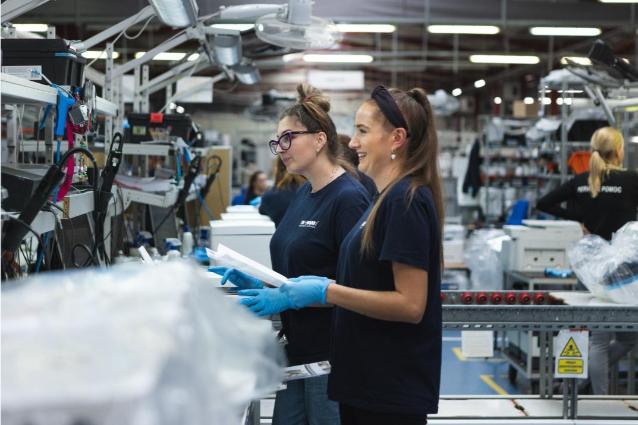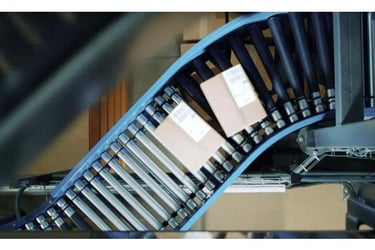When handling product returns, you know how important it is for cost efficiencies and recovery to process quickly and effectively, maximizing the yields of products for the secondary market. Failing to stay on top of an efficient process affects your bottom line, so making sustainable cost and volume reductions can make all the difference.
Poorly managed returns negatively impact finances, the environment, and customer perception of your brand. Particularly with high-value products, there are high financial implications from customers simply removing products from the packaging and returning them, meaning they cannot be deemed ‘new’.
Your goal should be to keep the device from being returned. Therefore, where possible, you need to solve the customer problem, if there is one, and avoid the cost impact.
Ingram Micro Lifecycle supports returns avoidance initiatives for customers around the globe, offering end-to-end returns management services that enable repair and refurbishment solutions to maximize value recovery on the secondary market. Our technical call center provides direct-to-user liaison, offering guidance and advice for those with issues or making returns.
In this article, we’ll explain returns avoidance and how it can help you become more sustainable, reduce costs, and streamline your returns management.
What is returns avoidance?
Generally, the reasons behind customers wanting to return products fit into three broad categories:
- Mismatch of the product against their needs
- Issues with the ordering or delivery process
- Abuse of the returns policy or fraudulent activity
Returns avoidance covers activities that a brand initiates to reduce the volume of returns and returns requests. These activities seek to resolve the three categories above. This means the return doesn’t happen, and fewer products are sent back up the supply chain.
An example of returns avoidance may be a partial refund to the customer instead of them requesting a return.
For returns avoidance to be effective, you must understand your customer expectations, including their intended use of the product, perceptions of quality, and delivery expectations. What are the requirements and qualification criteria that your customers have? What are the factors in their purchase and non-purchase decisions?
While generous returns policies can enable abuse through bracketing, for example, restrictive returns policies may not be the answer to reducing the volume of returns that you’re experiencing. Steps towards tightening your policies can include shortening the returns window or adding a returns fee.
Consumers often actively check the returns policy before they purchase, factoring this into their purchase decision. You could affect your sales volumes by restricting the returns policy.
You may prefer to take an organic approach to minimizing returns and focus on the reasons behind the returns. Do this by monitoring and analyzing the data and metrics to identify common trends.
Why returns avoidance alone isn’t beneficial
In the example given above, a customer had raised a concern over their purchase. By offering a partial refund so they keep the product and don’t commit to sending the return, they still possess a product they potentially aren’t fully satisfied with.
This can deteriorate the customer relationship further if their dissatisfaction deepens, affecting their loyalty to your brand and the likelihood of you retaining their repeat custom.
Avoidance vs prevention
These are two different tactics when it comes to reducing the volume of returns that you face. They could be considered synonymous but ultimately need to work in tandem and complement each other.
Preventative returns activities include improving product quality, providing better product information or instructions to realign customer expectations, and offering better customer services.
For example, one of the reasons consumers return products is because they struggle to use them. This may mean that it doesn’t perform to their expectations, or at all. They want to initiate a return. With better technical support, this issue can be resolved with the customer so they better understand the product. They get the outcome they wanted, which is a working product, and the return is prevented.
These all work to improve your overall user-friendliness so they can be better informed about their purchase decision and are better equipped, should product issues arise.
A key way technology is helping improve product information at the point of purchase is the introduction of Augmented Reality (AR). These help potential users to better see how a product looks.
For example, if shopping for a new coffee machine, AR can help you position it in your kitchen to see the sizing and colors. Interactivity with the AR model allows potential customers to see all around the product to get a better understanding of its functions.
This type of technology is being applied to a range of products, including glasses and furniture, as well as small domestic appliances.
Returns avoidance tactics can be deployed within the supply chain, making optimizations around manufacturing, quality control, and product usability. Making improvements to the product minimizes the possibility of discoverable faults – no faults, no returns needed.
Working with a returns management partner can enable focused time on understanding the causes of returns. Using a third party is a way of investing in time that you may not have, or in activities that you may not have the resources to facilitate internally.
This includes conducting product strip-downs and root cause analysis. Look for a returns management partner who can offer a full end-to-end solution, complete with a technical call center, if you don’t already operate one. The results from these tests and analyses can be fed into the technical call center, which can feed information to your customers.
Gatekeeping
This is also different from the practice of gatekeeping. In returns, this is the act of your company screening a returned product to determine whether it meets the criteria of being accepted as a returned product, or gets rejected.
Approving a returned product sees them routed to the appropriate next step in your returns process. Rejecting a return could see the customer receiving the return back. For example, if they claim there was a fault, but your gatekeeping process finds this to be incorrect.
Benefits of better returns management
There are multiple reasons why you should actively seek to minimize the volume of returns that your business experiences and improve your returns handling processes.
Reduces waste
Fewer returns mean there’s less waste to be responsibly managed. A faulty product being sent back to the manufacturer may completely be scrapped if repair and refurbishment aren’t conducted. There may be additional waste packaging generated by the backward movement of the product from the consumer. This also generates additional CO2 from the logistics process.
If a consumer has a faulty product but isn’t successful in getting a return agreed upon, they may dispose of it unsustainably. This adds to the problem of e-waste.
Cost recovery
There are 9 key ways in which cost recovery of returns is affected. Optimizing your returns enables rapid and efficient processing to tackle the impacts of depreciation ahead of repairs and refurbishment for your products.
Getting these swiftly through the chain gets them turnaround for secondary market sales so you can recuperate some value.
Time savings
If you’re minimizing or outsourcing the volume of returns you’re experiencing, then you’re gaining back time that could be focused on more strategic functions of your business.
Optimizing the process and making it straightforward also saves the customer time, boosting their likelihood of becoming a repeat customer as they have a more positive experience.
Source of preloved products
The demand for used and refurbished goods is growing as consumers seek an alternative to buying brand-new ones.
Partnering with a third-party returns management solution enables the efficient processing and repair of returns, increasing the yield that can be put onto the secondary market. The partner will bring valuable relationships, connections, and access to secondary outlets that you may not have.
By working to extend the lifecycle of devices, and salvaging returns wherever possible, you’re enabling a circular economy.
Ready to improve your returns recovery?
Returns are unavoidable, but there are ways to make it as pain-free as possible for both you and your customers. Take steps to mitigate against unnecessary returns while recovering value on those you can’t avoid.
The skilled technicians within Ingram Micro Lifecycle get into the depths of your product, learning them inside and out, becoming experts. Through their diverse technical knowledge, both of the industry generally and of your unique product, they can provide detailed feedback from product strip-downs.
This makes us uniquely placed with our technical call center to offer a true end-to-end returns management solution. We oversee the processing of your returns in secure facilities to increase the yield of products for secondary markets.
Get in touch with us today to discuss how we can tackle backlogged returns, offer warehousing and live inventory management, repair and refurbish returns to recover the maximum possible value for you, and more.
Recommended reading:
- How quickly do smartphone returns depreciate? 5 key factors
- 5 ways a technology circular economy boosts your sustainability goals
- Successful technology returns program: checklist for network operators
- 14 reasons your consumers are returning their mobile phones
- 11 benefits of returns management for small domestic appliances
- Tips for getting the most from your returns management partner













.png?width=450&height=250&name=technician%20works%20on%20raylo%20devices-min%20(1).png)